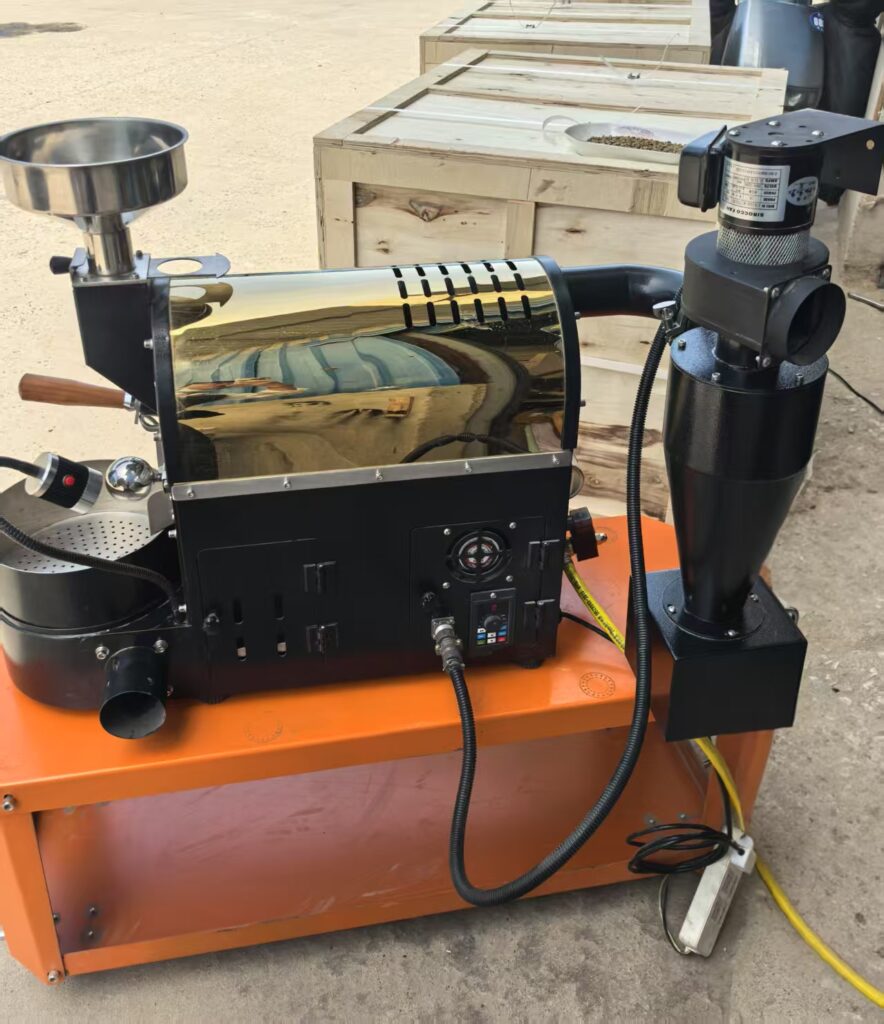The Science Behind Compact Coffee Roasters: Precision, Control, and Innovation
Coffee enthusiasts seeking freshness and customization are turning to compact roasting machines, which combine technical sophistication with user-friendly design. These devices leverage advanced engineering to deliver consistent results, even in small spaces. Below, we explore the core principles that make compact roasters a game-changer for home and specialty coffee production.
Thermal Dynamics and Airflow Management
Compact roasters rely on precise heat distribution to achieve uniform bean development. Unlike traditional drum roasters, which use direct contact with heated surfaces, many compact models employ hot-air convection systems. These systems force heated air through perforated plates or rotating chambers, ensuring beans are evenly exposed to thermal energy.
The process begins with a preheating phase, where sensors monitor ambient and machine temperatures to stabilize the environment. During roasting, airflow is dynamically adjusted to control heat transfer rates. For example, slower airflow in the early stages preserves delicate floral notes, while increased velocity in later stages accelerates caramelization. Some designs incorporate dual-fan systems to separate cooling air from roasting air, preventing flavor contamination between batches.
Advanced models also integrate infrared temperature sensors that track bean surface heat without physical contact, reducing measurement errors. This non-invasive approach allows real-time adjustments to airflow and heat intensity, critical for achieving light, medium, or dark roast profiles.
Bean Movement and Agitation Mechanisms
Uniform roasting requires constant bean movement to prevent scorching and ensure even exposure to heat. Compact roasters achieve this through mechanical or pneumatic agitation systems.
- Mechanical agitation: Rotating paddles or helical screws gently tumble beans within the roasting chamber. This method is energy-efficient and suitable for small batches, though it may generate more bean chaff.
- Pneumatic agitation: Pressurized air jets lift and circulate beans, creating a fluidized bed effect. This approach minimizes physical contact, reducing wear on components and preserving bean integrity. Pneumatic systems are often paired with cyclonic separators to filter out chaff and dust, ensuring cleaner output.
Some roasters combine both methods, using mechanical agitation for initial drying and pneumatic agitation for final development. This hybrid approach balances efficiency with precision, allowing users to replicate commercial-grade roasts at home.
Automation and Real-Time Feedback Systems
Modern compact roasters prioritize automation to simplify the roasting process. Integrated microcontrollers manage critical variables like temperature, airflow, and roast time, executing pre-programmed profiles or adapting to user inputs.
- Profile programming: Users can save custom roast curves, specifying temperature ramps, dwell times, and cooling rates. These profiles are stored in non-volatile memory, ensuring consistency across sessions.
- Sensors and alerts: Optical sensors detect bean color changes, while pressure sensors monitor airflow resistance. If deviations occur, the system triggers alerts or adjusts parameters automatically. For example, a sudden drop in airflow might indicate a clogged filter, prompting the machine to pause and notify the user.
- Connectivity features: Wi-Fi or Bluetooth-enabled roasters sync with mobile apps, allowing remote monitoring and adjustments. Users can start roasts, receive notifications, or share profiles with a global community, fostering collaboration and experimentation.
Sustainability and Energy Efficiency
Compact roasters are designed with sustainability in mind, minimizing waste and energy consumption.
- Heat recovery systems: Some models capture exhaust heat to preheat incoming air, reducing energy demand by up to 30%.
- Modular components: Detachable roasting chambers and filters simplify maintenance and extend machine lifespan.
- Low-emission designs: Advanced filtration systems trap volatile organic compounds (VOCs) and particulate matter, meeting indoor air quality standards.
These features align with growing consumer demand for eco-friendly appliances, positioning compact roasters as a responsible choice for environmentally conscious users.
Precision in Small Batches: The Art of Consistency
Achieving uniformity in small batches is a hallmark of compact roasters. By leveraging high-resolution sensors and adaptive control algorithms, these machines maintain tight tolerances for temperature and airflow, even when processing as little as 100 grams of beans.
For instance, during the “first crack” phase—a critical milestone in roast development—sensors detect acoustic and thermal changes to time adjustments precisely. This level of control ensures that each batch, regardless of size, meets the desired flavor profile, eliminating the variability common in manual roasting.
Compact coffee roasters represent a fusion of engineering precision and user-centric design. By mastering thermal dynamics, agitation mechanisms, and automation, these machines empower enthusiasts to explore coffee’s full potential without compromising on quality or sustainability. As technology advances, we can expect even greater integration of AI-driven tools, further refining the art of home roasting.


